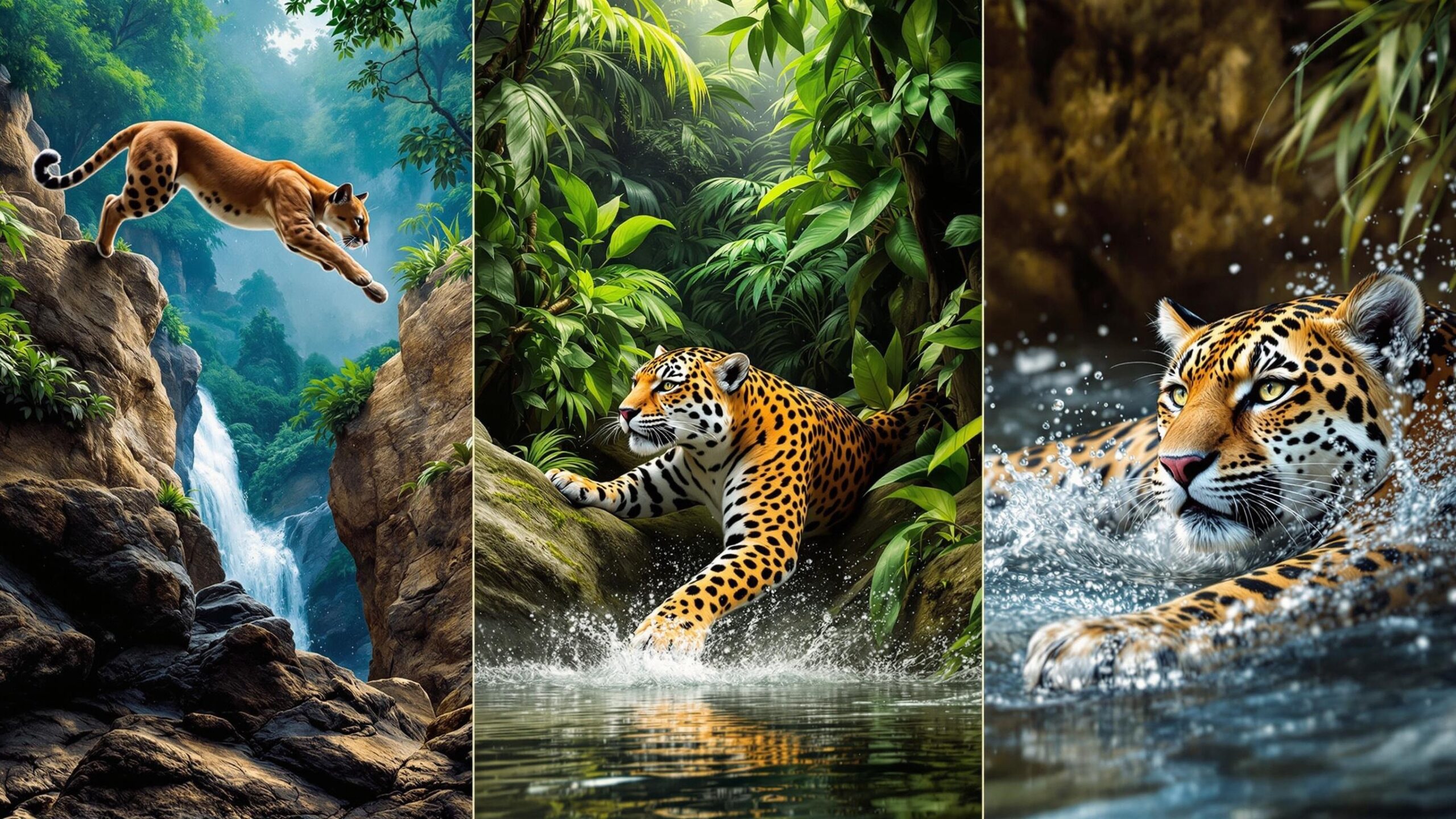Big Cats: The Silent Rulers, Stealthy Stalkers, and Supreme Predators of the Wild
There is a certain mystique that surrounds the big cats. Their lithe, muscular bodies, piercing eyes, and silent, calculated movements command both fear and admiration. Whether stalking the savannahs, prowling through rainforests, or blending into snowy landscapes, big cats are the apex predators of the mammal world—each species a master of its domain. These elite carnivores have fascinated humans for millennia, appearing in myths, flags, coats of arms, and spiritual traditions across every continent they roam. They are not just predators; they are symbols of power, independence, and grace.
This article serves as an exciting and in-depth introduction to the world of big cats. It will guide you through the defining traits of these majestic creatures while preparing you to explore the sub-categories of big cats, including lions, tigers, leopards, jaguars, cheetahs, snow leopards, cougars, and clouded leopards. Each of these feline legends holds a unique place in the ecosystems they rule and the cultures they inspire.
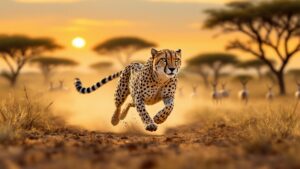
Cheetahs
Cheetahs: The Speed Kings of the Savanna and Symbols of Grace in Motion In the heartbeat between life and death, there is a blur on the horizon. It is neither shadow nor wind, but something alive—an explosion of muscle, velocity, and precision. The cheetah, with its slender frame and tear-streaked eyes, is the embodiment of pure speed. More than just the fastest land animal, the cheetah is a marvel of
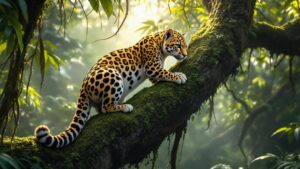
Clouded Leopards
Clouded Leopards: The Jungle’s Phantom Cats with the Grace of Shadows In the emerald labyrinths of Southeast Asia’s tropical rainforests, where sunbeams dapple leaves like fragments of gold and vines weave stories into the canopy, there lives a creature so elusive it seems woven from mist itself. The clouded leopard, with its dreamlike patterning, acrobatic prowess, and secretive nature, is one of the most mysterious cats in the world. Rarely
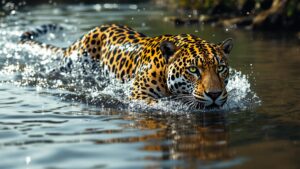
Jaguars
Jaguars: The Silent Kings of the Rainforest and Masters of the Americas Deep in the emerald heart of the rainforest, where shadows dance on fallen leaves and rivers coil like snakes through ancient jungle, a pair of golden eyes pierces the dusk. With a slow, calculated stride, a figure emerges—a creature at once regal and ruthless. The jaguar, draped in golden fur marked with dark rosettes, is not just a
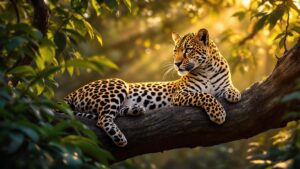
Leopards
Leopards: The Stealthy Shadows of the Wild That Rule from the Trees to the Ground In the flickering twilight of the African savanna, a spotted ghost silently weaves through the tall grass. Muscles ripple beneath its golden coat as it climbs a tree with supernatural ease, dragging prey twice its size with barely a sound. It is the leopard—an enigma cloaked in rosettes, an apex predator that has conquered forests,
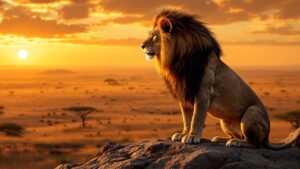
Lions
Lions: Kings of the Wild and Guardians of the Grasslands There is no creature more iconic in the animal kingdom than the lion. Regal, commanding, and deeply symbolic, lions have captured the imagination of humankind for millennia. From the stories of ancient civilizations to the flags of modern nations, the lion’s presence has always stood for courage, dominance, and nobility. But behind the legend lies a living, breathing species whose
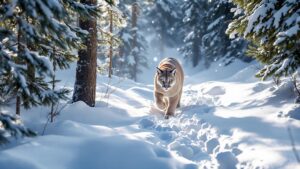
Pumas
Pumas, Cougars, Mountain Lions: The Secret Kings of the Americas In the hush of twilight, as mountain shadows stretch long across the land, a silent hunter emerges. With a body built for stealth and agility, eyes sharp as stars, and muscles coiled beneath a sleek tawny coat, the puma—also known as the cougar, mountain lion, panther, or catamount—moves like a whisper through the wild. It is the most widespread big

Snow Leopards
Snow Leopards: The Ghosts of the Mountains and Guardians of the High Himalayas High above the tree line, where the earth brushes the sky and snow lingers year-round, a solitary shape glides silently across a craggy ledge. Clad in a cloak of misty-gray fur and dappled with black rosettes, the snow leopard is both a symbol of nature’s raw elegance and a survivor in one of the harshest habitats on
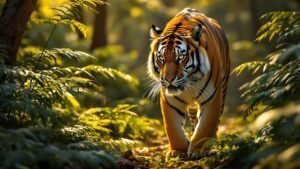
Tigers
Tigers: Striped Shadows of the Wild and Emperors of the Forest Few animals command awe quite like the tiger. With its flame-colored coat, black stripes, and intense gaze, the tiger embodies both elegance and power. It stalks silently through dense jungles, snowy forests, and swampy mangroves, the very image of a perfect predator—rare, elusive, and utterly mesmerizing. For centuries, tigers have been symbols of strength, fearlessness, and mystique. They are
What Defines a Big Cat?
The term “big cat” typically refers to members of the genus Panthera, including lions, tigers, leopards, and jaguars—species known for their size, hunting prowess, and ability to roar. However, the category has grown to include other large feline predators such as cheetahs, cougars, snow leopards, and clouded leopards, even though some of these lack the signature roar due to differences in vocal anatomy.
What unites these cats is not just their physical size but their place at the top of the food chain, their stealthy hunting abilities, and their wide geographic spread. They have adapted to thrive in diverse environments—from dense rainforests and open savannahs to arid deserts and icy mountain ranges. All big cats are obligate carnivores, relying on meat to survive. They possess exceptional night vision, sharp claws, powerful jaws, and finely-tuned muscles that allow them to stalk, ambush, and overpower prey.
Big cats are solitary by nature, with the exception of lions, which form complex social structures called prides. Their elusive nature makes them both difficult to study and deeply intriguing. And despite their strength and reputation, many of these species are vulnerable or endangered, facing threats from habitat loss, poaching, and human-wildlife conflict.
The Lion: The Social Monarch of the Savannah
The lion is perhaps the most iconic of the big cats, often referred to as the “king of beasts.” Unlike most of its feline relatives, the lion is highly social, living in prides composed of multiple females, their offspring, and a coalition of males. This social structure is key to the lion’s success as a predator in the open grasslands and woodlands of Africa. Male lions are easily recognizable by their thick manes, which vary in color and length and signal maturity and strength. Females are the primary hunters, working together to bring down prey such as zebras, wildebeests, and buffalo. Lions are powerful but not built for endurance. They rely on teamwork and ambush tactics to catch their quarry. Beyond the savannah, lions hold cultural significance across the globe. They have appeared in Egyptian hieroglyphs, medieval European banners, and Indian legends. But today, lion populations are declining due to shrinking habitats and conflicts with humans over livestock. Conservation efforts are working to protect these magnificent animals, ensuring that their thunderous roars continue to echo across the African plains.
The Tiger: The Solitary Phantom of the Jungle
Tigers are the largest of the big cats and perhaps the most visually stunning, with their fiery orange coats and black stripes. Solitary and stealthy, tigers are apex predators in forests, grasslands, and wetlands across Asia. Each stripe pattern is unique, like a fingerprint, helping them blend into their surroundings. Unlike lions, tigers are lone hunters, fiercely territorial and incredibly patient. They rely on ambush tactics, using their camouflaged coats to get close to prey before delivering a powerful final blow. Tigers are strong swimmers and often hunt near rivers, preying on deer, wild boar, and even crocodiles. There are several subspecies of tiger, including the Bengal, Siberian, Sumatran, Indochinese, South China, and Malayan tigers. The Siberian tiger is the largest, while the Sumatran is the smallest and most critically endangered. Across all subspecies, tigers face serious threats from habitat fragmentation and poaching, especially for the illegal wildlife trade.
Tigers symbolize raw power and solitude. Their mystique has inspired folklore, poetry, and spiritual reverence in cultures throughout Asia. Protecting tigers is not only crucial for biodiversity but for preserving the cultural heritage of the regions they inhabit.
The Leopard: The Spotted Shadow of the Wild
Leopards are the most adaptable of the big cats, found in a wide range of environments across Africa and Asia—from savannahs and mountains to rainforests and urban fringes. Known for their rosette-patterned coats and elusive nature, leopards are masters of stealth and agility. These cats are solitary and nocturnal, using the cover of night to hunt. They are ambush predators, relying on surprise and explosive power to capture prey. What sets leopards apart is their strength relative to size; they are capable of dragging prey much heavier than themselves into trees to avoid scavengers. Leopards are versatile eaters, consuming everything from antelope and monkeys to rodents and birds. Their adaptability to human-dominated landscapes has allowed them to survive in areas where other big cats have disappeared. However, this also brings them into conflict with humans, leading to retaliatory killings and habitat encroachment.
Often underestimated, leopards are the quiet survivors of the feline world. Their beauty and resilience make them symbols of both grace and mystery.
The Jaguar: The Powerhouse of the Americas
The jaguar is the largest big cat in the Americas and the third-largest in the world. Found primarily in Central and South America, jaguars are most at home in tropical rainforests, swamps, and wetlands, although they also inhabit grasslands and dry forests. Jaguars have a similar rosette pattern to leopards, but their rosettes are larger and often have a central black spot. They are known for their robust, stocky build and incredibly powerful bite—the strongest of any big cat relative to size. This allows them to crush the skulls or shells of prey like turtles and caimans. Unlike many cats, jaguars are comfortable in water and often hunt aquatic or semi-aquatic animals. Their hunting style is swift and direct, often involving a single devastating bite to the head.
Jaguars play a key role in the ecosystems they inhabit, controlling populations of herbivores and smaller predators. Yet, their range has diminished due to deforestation, agriculture, and poaching. Revered by indigenous cultures as a spirit animal and protector, the jaguar remains a symbol of strength and mystery.
The Cheetah: The Sprinter of the Savannah
The cheetah is the fastest land mammal, capable of reaching speeds up to 70 miles per hour in short bursts. Built for speed, cheetahs have slender bodies, long legs, deep chests, and distinctive black “tear marks” running from their eyes to their mouths. These marks help reduce glare and focus attention on prey during high-speed chases. Unlike other big cats, cheetahs are not part of the genus Panthera and cannot roar. Their calls resemble chirps and purrs, and they are generally shy, non-confrontational animals. They prefer open plains where they can spot and chase down prey like gazelles and impalas. Cheetahs rely on speed rather than strength, and their fragile build makes them vulnerable to injury and theft of kills by stronger predators. They are solitary or live in small family groups, with males sometimes forming coalitions.
Despite their incredible abilities, cheetah numbers are declining due to habitat loss, low genetic diversity, and competition with other large carnivores. Conservation programs are focused on habitat protection and captive breeding, as the cheetah remains one of the most endangered big cats in Africa.
The Snow Leopard: The Ghost of the Mountains
Snow leopards dwell in some of the most rugged and remote terrain on Earth—high-altitude ranges across Central and South Asia. With thick, smoky-gray coats, long tails, and powerful limbs, they are perfectly adapted to cold, mountainous environments. These elusive cats are nearly impossible to spot in the wild, earning them the nickname “ghost of the mountains.” Their thick fur and wide, fur-covered paws help them navigate snow and rocky slopes, while their long tails provide balance and warmth. Snow leopards hunt blue sheep, ibex, and other mountain ungulates. They are generally solitary and have vast territories that they patrol silently and methodically. Despite their secrecy, they occasionally come into conflict with herders, which has led to retaliatory killings.
Today, snow leopards are classified as vulnerable, with climate change and human encroachment threatening their fragile alpine habitats. Still, they remain a symbol of endurance and serenity, embodying the quiet resilience of mountain ecosystems.
The Cougar: The Ghost Cat of the Americas
Also known as mountain lions, pumas, or panthers, cougars are among the most widespread large cats in the Americas. They inhabit everything from dense forests and mountainous terrain to deserts and grasslands. Cougars are stealthy and versatile, adapting to both wild and semi-urban environments. Unlike jaguars or leopards, cougars lack spots as adults and are known for their sleek, uniform coats and long tails. They are powerful jumpers and climbers, capable of bringing down deer and other large prey with a swift ambush. Cougars are solitary and elusive, often moving under the cover of darkness. They play a critical role in regulating herbivore populations and maintaining ecosystem balance.
Despite their adaptability, cougars face threats from habitat loss, vehicle collisions, and persecution due to livestock predation. Yet their quiet endurance and ability to thrive in diverse landscapes make them a resilient and iconic species in the Americas.
The Clouded Leopard: The Tree-Dwelling Mystery
The clouded leopard is a small, elusive big cat found in the forests of Southeast Asia. Named for the cloud-like patterns on its coat, this feline is a master climber, with short, strong legs, flexible ankles, and a long tail for balance. Despite its name, the clouded leopard is not closely related to leopards. It is a unique evolutionary branch, with one of the most powerful bites relative to skull size among cats. It preys on birds, monkeys, and small mammals, often leaping from trees to attack. Clouded leopards are rarely seen in the wild and remain one of the least studied big cats. Their populations are declining due to deforestation and illegal wildlife trade. Conservation efforts aim to protect their forest habitats and understand their behavior more deeply.
These secretive cats remain a symbol of the unknown, embodying the hidden richness of Southeast Asia’s jungles.
Guardians of the Wild and Emblems of Nature’s Majesty
Big cats are more than predators—they are living embodiments of power, stealth, and elegance. They represent the untamed essence of the wild and play critical roles in shaping ecosystems across the globe. Whether racing through the grasslands, slinking through dense foliage, or silently navigating snow-covered ridges, big cats captivate the imagination like few other creatures. Their future, however, depends on our actions. Conservation, habitat protection, and global awareness are crucial for ensuring that these majestic animals continue to thrive. As we explore each sub-category of big cats in depth, from lions and tigers to snow leopards and clouded leopards, we celebrate their individuality and the incredible world they reveal.

